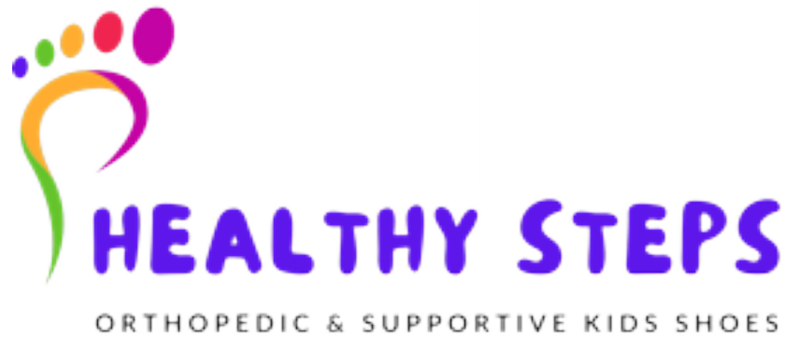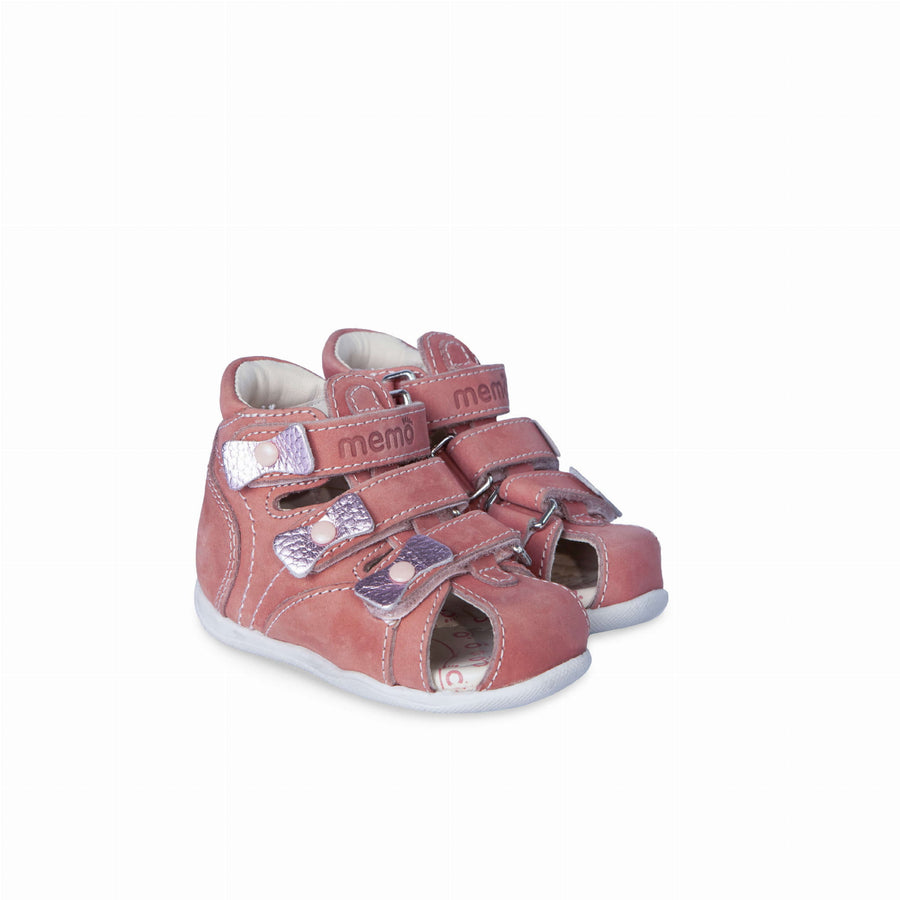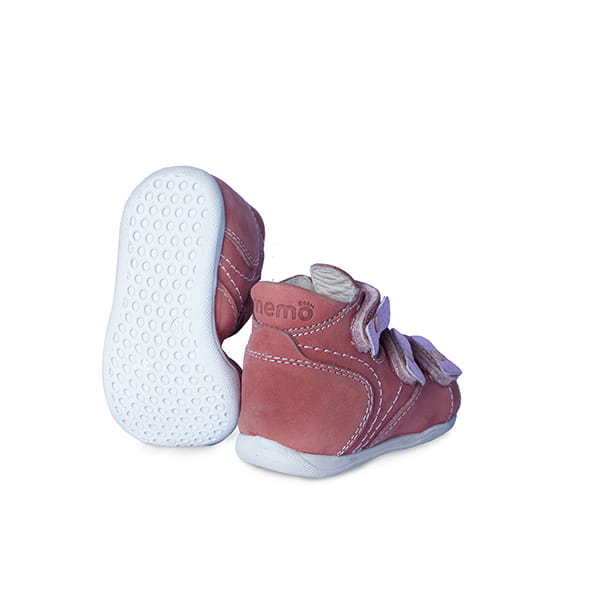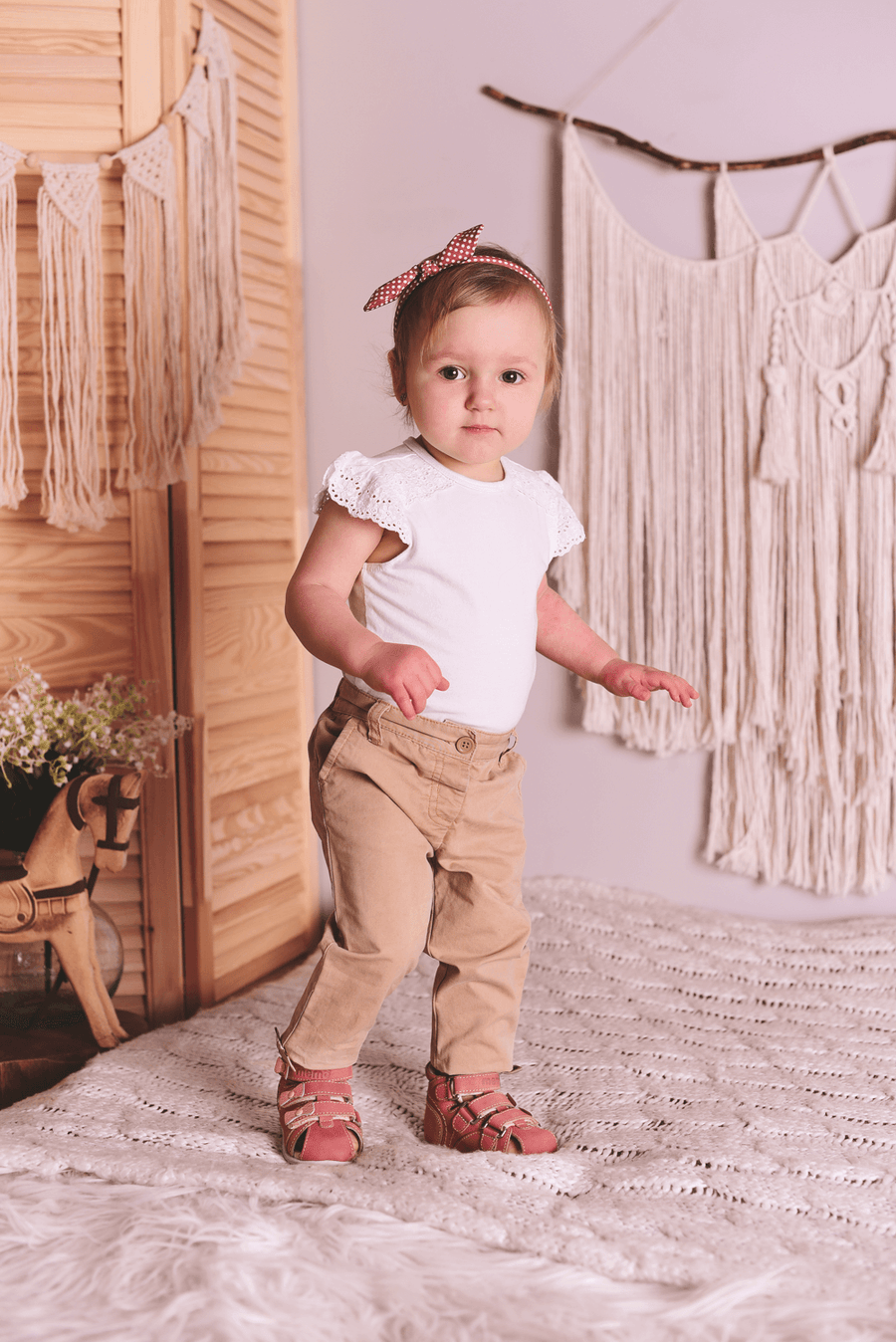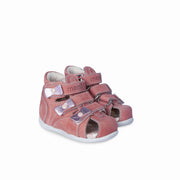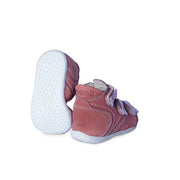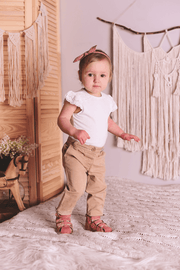Memo girls leather sandals/ first steps / Pink BAMBI 1JB
€56,70
€81,00
Bambi 1JB is a preventive sandal for girls, designed to provide safe and comfortable support for little feet. Made from high-quality, soft yet durable leather, it gently wraps around the foot, ensuring both protection and comfort. Well-fitted preventive footwear supports proper foot positioning and can assist in stabilization from the very first steps. It can also be used during the learning-to-walk phase, offering children both safety and comfort. Baby shoes do not have the diagnostic sole, since their primary function is prevention.
Sizes: 18-21
INSTRUCTION FOR USE MEMO prophylactic and corrective footwear
Performance characteristics of the product
The orthopedic-corrective footwear group consists of the Baby collection, the winter collection, and other Memo models up to size 38 that do not have a diagnostic sole. Their primary function is preventive care. If necessary, orthopedic insoles from Memo can be used in shoe sizes ranging from 22 to 38 to correct foot defects. If corrective insoles are not required, Memo shoes serve a preventive function.
Intended use
The need for stabilization and correction in the following basic diseases and diagnostics of the following diseases:
• length asymmetry of lower limbs,
• asymmetry of the feet,
• other biomechanical disorders of the hip joints,
• knee and ankle joints requiring correction/stabilization.
Usage
• Footwear should be put on and removed without lacing.
• Avoid getting your shoes wet. In case of heavy soaking, the shoes should not be dried in the immediate vicinity of devices that emit heat. The shoes should be unlaced before drying. Inserting the paper inside the footwear will avoid deformation of the shape.
• Footwear made of nubuck and velour leather is much less resistant to water.
• Do not wash leather shoes in the washing machine. Hot water, detergents, spinning deteriorate the condition of the footwear - it loses its original shape, appearance, and durability.
• Change the shoes you wear every day; it will allow the shoes to get rid of excess moisture.
• Footwear should be used as intended.
• Do not buyshoesthataretoolargeor
WARNING
The maximum allowable footwear allowance should not exceed 1 cm. Too large shoes do not fulfill their orthopedic function. Footwear should be adjusted to the foot in such a way, to ensure proper comfort of use. The user or his carer should consult a healthcare professional if he is unsure whether the medical device is appropriate for a given patient.
Footwear maintenance
Grain leather:
After cleaning the shoes, use colored pastes per the intended use and the top color. After the paste is absorbed into the skin, polish the shoes with a soft bristle brush or flannel until it is glossy.
Nubuck leather, velour:
After cleaning the shoes, use aerosol-impregnating agents to refresh leathers such as nubuck and velour, according to the color of the upper. It is not recommended to use pastes and creams.
